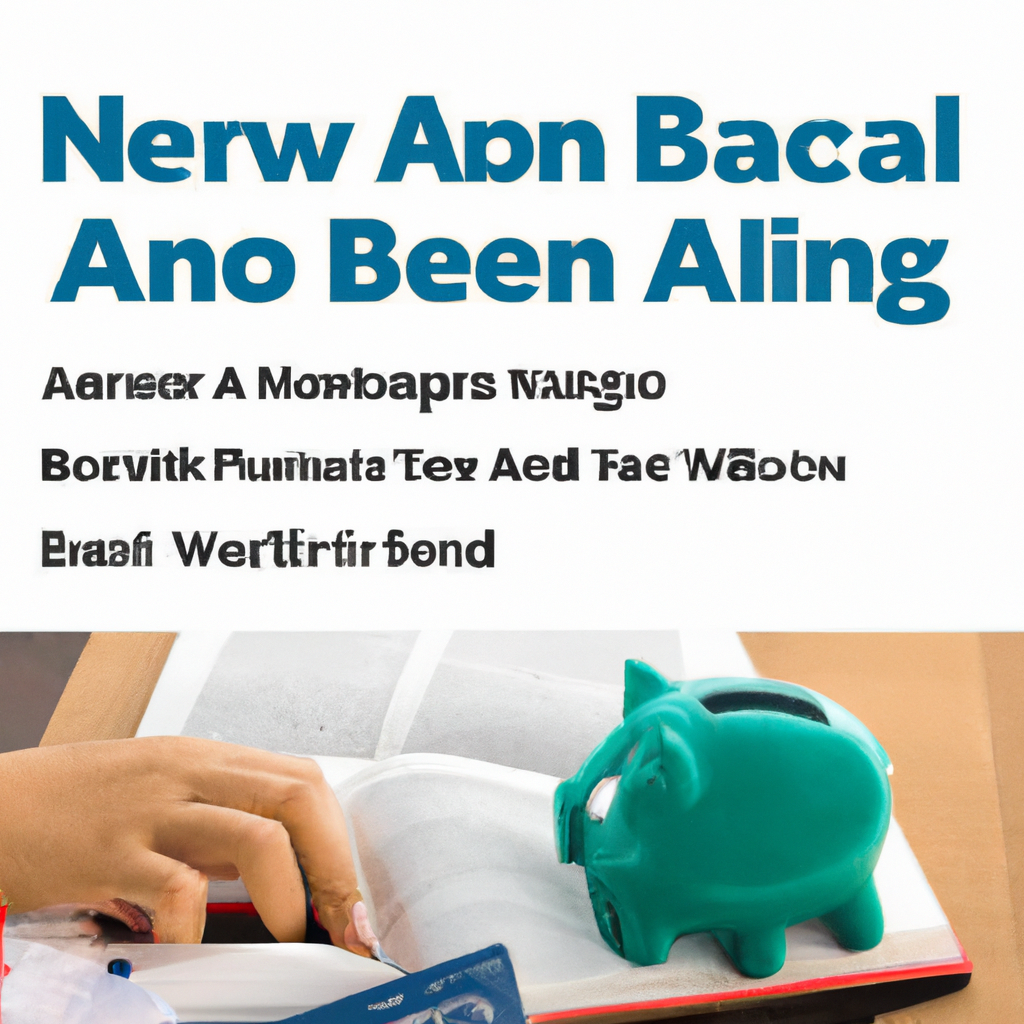So you’ve recently arrived in the United States and you’re eager to get settled, but there’s one task on your to-do list that has you feeling a bit unsure – opening a bank account. Don’t worry, we’ve got you covered! In this article, we will walk you through the step-by-step process of opening a bank account in the US as a newcomer. From choosing the right bank to gathering the necessary documents, we’ll provide all the guidance you need to navigate this process with ease. So let’s dive in and get you on your way to financial security in your new home!

Choose a Bank
Research different banks
When it comes to opening a bank account in the US as a newcomer, the first step is to research different banks. It’s important to find a bank that meets your specific needs and offers the services and features you are looking for. Take some time to explore the websites and read reviews of various banks to gather information about their reputation, customer service, and the types of accounts they offer.
Consider the services and features offered
When researching different banks, consider the services and features they offer. Some key features to look for include free checking and savings accounts, online and mobile banking options, ATM access, and the availability of a debit card. If you require additional services such as international wire transfers or specialized accounts, make sure to check if the bank provides them.
Check for fees and charges
Before finalizing your decision, it’s crucial to check for any fees and charges associated with the bank’s services and accounts. Some common fees to watch for include monthly maintenance fees, overdraft fees, ATM fees, and foreign transaction fees. Choose a bank that aligns with your financial goals and offers accounts with minimal fees to help you save money in the long run.
Determine Account Type
Decide on an account type
Once you’ve chosen a bank, it’s time to decide on the type of account that suits your needs. There are various types of bank accounts available, including checking accounts, savings accounts, money market accounts, and certificates of deposit (CDs). Determine which account type best aligns with your financial goals and how you plan to use the account.
Consider your banking needs
Consider your banking needs before selecting an account type. If you anticipate having frequent transactions and need easy access to your money, a checking account might be the best choice. However, if you are looking to save for the long term or earn interest on your money, a savings account or a CD might be more suitable. Assessing your needs will help you determine which account type will provide the most value for you.
Evaluate the minimum balance requirements
It’s important to evaluate the minimum balance requirements associated with the account type you choose. Many banks require a minimum balance to be maintained in order to avoid monthly maintenance fees or earn interest. Consider your financial situation and determine if you can comfortably meet the minimum balance requirements of the account you are interested in. If not, look for an account with lower minimum balance requirements or none at all.
Gather Required Documents
Collect identification documents
To open a bank account in the US as a newcomer, you will need to provide identification documents. The most commonly accepted forms of identification include a valid passport, driver’s license, or state identification card. Make sure to have these documents readily available to present to the bank during the account opening process.
Obtain proof of address
In addition to identification documents, you will also need to provide proof of address. This can be in the form of utility bills, rental agreements, or bank statements that clearly show your name and current address. It’s a good idea to obtain and gather these documents prior to your appointment with the bank to ensure a smooth account opening process.
Provide proof of immigration status
As a newcomer in the US, you may also be required to provide proof of your immigration status. This can include an Employment Authorization Document (EAD), Permanent Resident Card (Green Card), or any other immigration-related documents. Make sure to gather these documents and bring them with you to your appointment with the bank.
Make an Appointment
Contact the bank of your choice
Once you have completed your research and gathered all the necessary documents, it’s time to contact the bank of your choice to schedule an appointment. You can usually find the bank’s contact information on their website or by calling their customer service line. Reach out to them and let them know that you are interested in opening a bank account as a newcomer.
Schedule an appointment
Schedule an appointment with the bank to open your account. Banks typically prefer appointments to ensure that they have enough time to assist you effectively. During the appointment, a banker will guide you through the process and answer any questions you may have. Be prepared to discuss your banking needs and provide the required documents.
Ask about any additional requirements
When scheduling your appointment, don’t hesitate to ask the bank if there are any additional requirements or documents that you need to bring along. It’s better to clarify everything beforehand in order to avoid any last-minute surprises or delays in the account opening process. The bank representative will be happy to provide you with any additional information you may need.

Prepare for the Appointment
Review the bank’s requirements
Before your appointment, take the time to review the bank’s requirements for opening a bank account as a newcomer. Familiarize yourself with their specific policies, minimum balance requirements, and any other criteria they may have. This will help ensure that you have all the necessary documents and information ready for your meeting with the banker.
Ensure you have all necessary documents
Double-check that you have all the necessary documents required by the bank. This includes your identification documents, proof of address, and proof of immigration status. Gather these documents and organize them in a folder or envelope to bring with you to the bank. Having all the documents readily available will make the account opening process more efficient.
Prepare any additional information or paperwork
If there are any additional information or paperwork that you need to provide, make sure to prepare them beforehand. This could include employment information or proof of income if the bank requires it. Being well-prepared will make the appointment go smoothly and help you open your bank account in a timely manner.
Visit the Bank
Arrive at the bank on time
On the day of your appointment, make sure to arrive at the bank on time. Being punctual shows respect for the banker’s time and helps maintain a positive impression. Give yourself some extra time in case of unexpected delays or traffic so that you can relax and be prepared for your meeting.
Bring all necessary documents
Remember to bring all the necessary documents that you have prepared. This includes your identification documents, proof of address, proof of immigration status, and any additional information or paperwork required by the bank. Having everything with you will streamline the process and help ensure a smooth account opening experience.
Dress appropriately and be well-prepared
When visiting the bank, dress appropriately, and professionally. While there is no strict dress code, it’s important to make a good impression. Being well-prepared shows the banker that you are serious about opening a bank account and can help establish trust. Dressing professionally and having all the necessary documents ready will make a positive impression on the banker.

Meet with a Banker
Discuss your banking needs
During your meeting with the banker, take the time to discuss your specific banking needs. Let them know how you plan to use the account, whether it’s for everyday transactions, savings, or any other specific purposes. The banker will guide you through the available options and help you choose the account that best suits your needs.
Provide necessary information and documents
Be prepared to provide the banker with the necessary information and documents they require for opening your account. This includes your identification documents, proof of address, and proof of immigration status. Answer any questions asked by the banker accurately and honestly, as this will facilitate the account opening process.
Ask questions or seek clarification
If you have any questions or require clarification about the account terms, services, or fees, feel free to ask the banker. They are there to assist you and provide all the necessary information. Asking questions ensures that you fully understand the account details and can make informed decisions about your banking needs.
Complete the Application
Fill out the required forms
Once you have discussed your banking needs and provided all the necessary information, you will be asked to fill out the required application forms. These forms typically include personal information, contact details, and account-specific information. Take your time to carefully fill out the forms, ensuring that all the information provided is accurate and up-to-date.
Provide accurate and up-to-date information
When completing the application forms, it is crucial to provide accurate and up-to-date information. This includes your full legal name, current address, contact information, and any other details as requested by the bank. Providing accurate information helps prevent any issues or delays during the account opening process.
Review the application before submitting
Before submitting the application, take a few moments to review it carefully. Double-check all the information and ensure that everything is accurate and complete. This is your final opportunity to make any necessary corrections or additions before the bank processes your application. Once you are satisfied with the application, submit it to the banker for further processing.

Fund Your Account
Decide on the initial deposit amount
To open your bank account, you will need to decide on the initial deposit amount. This is the minimum amount required by the bank to activate your account. Consider your financial situation and determine how much you are comfortable depositing as your initial balance. Some banks may have different minimum deposit requirements, so it’s essential to be aware of your chosen bank’s specific policy.
Provide the necessary funds
Once you have decided on the initial deposit amount, ensure that you have the necessary funds available to make the deposit. This can be in the form of cash, a check, or a transfer from another bank account. Make the necessary arrangements to have the funds readily available on the day of your appointment to avoid any delays in opening your account.
Choose a funding method
When providing the necessary funds, you may have the option to choose a funding method that works best for you. This could include cash, a personal check, a certified check, or a direct transfer from another bank account. Depending on your preference and the bank’s policies, select the most convenient funding method for your initial deposit.
Activate Your Account
Follow the bank’s instructions for account activation
After your application and initial deposit have been processed, the bank will provide instructions on how to activate your account. This may involve logging into your online banking portal, signing documents, or completing any additional steps required by the bank. Follow the provided instructions carefully to ensure that your account is fully activated and ready for use.
Set up online banking and mobile app access
As a newcomer, it is recommended to set up online banking and mobile app access for your bank account. This allows you to conveniently manage your finances, check your balance, make transfers, and pay bills from the comfort of your own home. Be sure to explore the bank’s online and mobile banking options and follow the necessary steps to get started.
Create strong passwords and security measures
When setting up your online banking and mobile app access, it is essential to create strong passwords and security measures. Choose a complex password that includes a combination of numbers, letters, and symbols. Additionally, enable two-factor authentication if available to add an extra layer of security to your account. Protecting your account with robust passwords and security measures is crucial to safeguard your financial information.
Opening a bank account in the US as a newcomer may seem overwhelming, but by following this step-by-step guide, you can navigate the process with ease. Remember to choose a bank that aligns with your needs, gather and prepare all the necessary documents, and be well-prepared for your appointment. By following these steps, you’ll soon have a bank account that meets your financial goals and provides convenient access to your funds.

